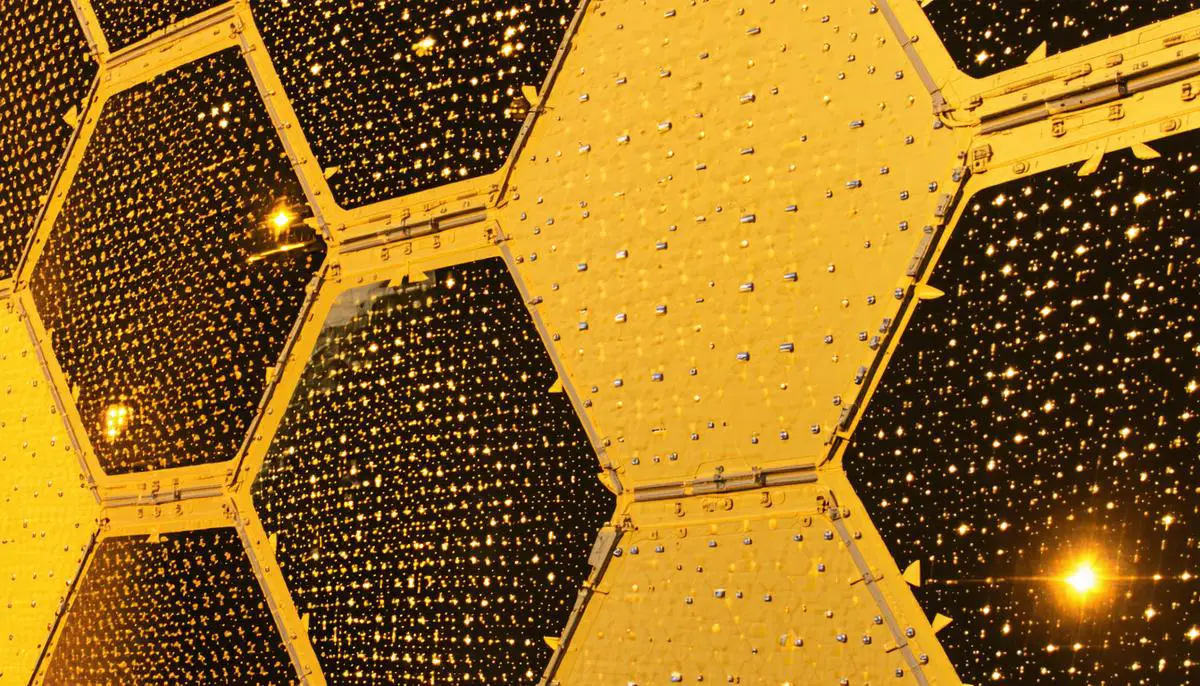Origins and Aims
The James Webb Space Telescope (JWST), a collaborative project by NASA, ESA, and CSA, aims to examine the universe's infancy, focusing on the first galaxies. These early structures provide insights into dark matter and dark energy, expanding our understanding of the universe's composition and evolution.
JWST will explore star formation, observing dense dust clouds where stars are born. Its infrared technology allows it to peer through these veils, observing nascent stars in their cradles. This has significant implications for understanding stellar formation processes and their impact on surrounding environments.
The telescope will also study exoplanets, using its spectrographs to analyze their atmospheres. By interpreting light spectra, JWST can identify chemical fingerprints, providing clues about potential habitability and advancing the search for Earth-like planets.
With its 6.5-meter-wide mirror, JWST captures light from distant objects, allowing more detailed observations than ever before. This capability is crucial for understanding galactic assembly over time and its role in forming vast cosmic structures.
From its position at the Sun-Earth L2 point, 1.5 million kilometers from Earth, JWST is poised to solve long-standing astronomical mysteries. With a planned operational life of at least two decades, it promises to expand our understanding of cosmic history significantly.
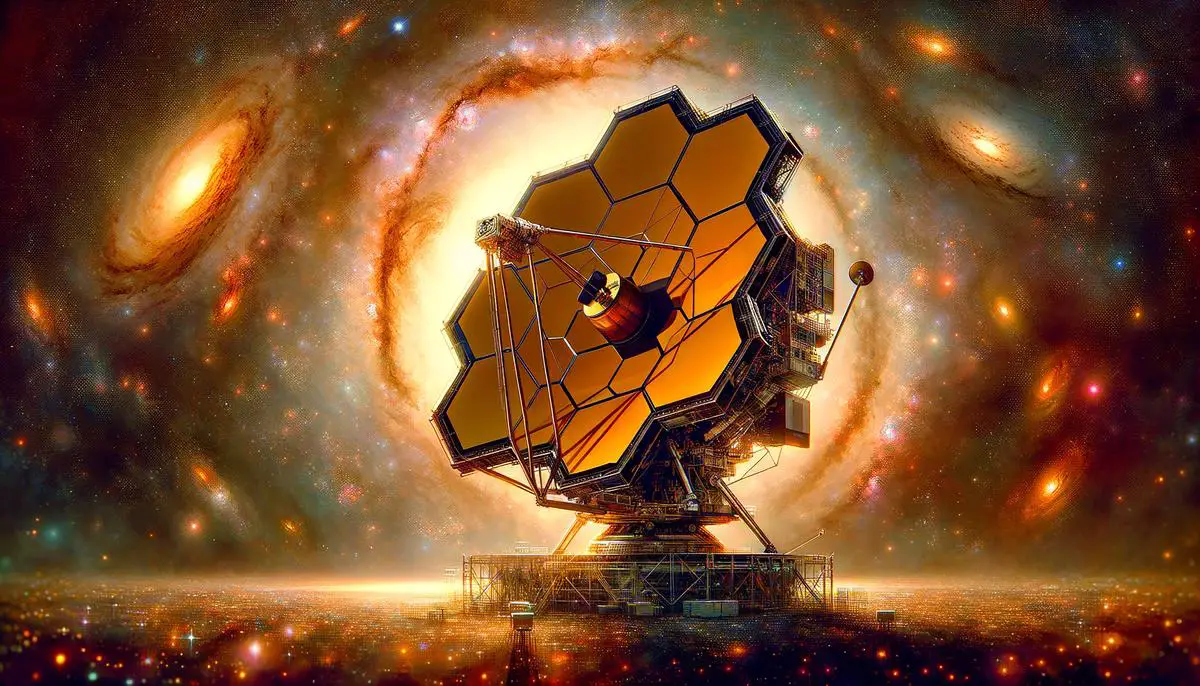
Technological Advancements
The James Webb Space Telescope represents a significant leap in space technology. Its primary mirror, spanning 6.5 meters in diameter, consists of 18 hexagonal segments coated in gold to maximize reflectivity and sensitivity to infrared light. This innovative design allows JWST to capture faint signals from the earliest galaxies.
JWST's sunshield, approximately the size of a tennis court, is composed of five layers of Kapton. This structure protects the telescope's instruments from the Sun's glare, maintaining them at the frigid temperatures necessary for optimal infrared sensitivity. The sunshield's successful deployment in space was a feat of precision engineering.
- Location: Second Lagrange point (L2), about 1.5 million kilometers from Earth
- Environment: Stable, unobstructed views
- Advantage: Perpetual shadow, enhancing observational capabilities
JWST's deployment required innovative solutions to operate successfully in the harsh space environment. Its instruments, designed to function in extreme cold, contribute to the telescope's ability to peer deeper into the universe than ever before.
Each component of JWST represents an advancement in space technology, collectively offering astronomers an unprecedented opportunity to observe the cosmos in new ways.
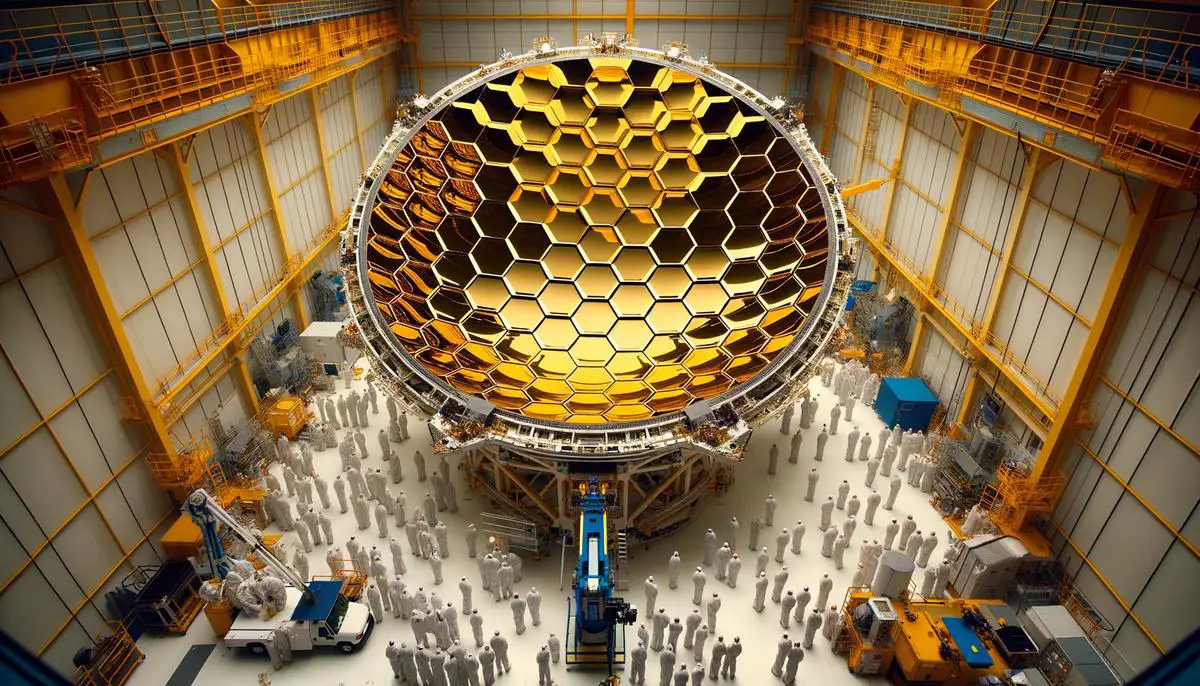
Infrared Observation Capabilities
JWST's focus on infrared wavelengths allows it to observe cosmic phenomena obscured by dust clouds, which are impenetrable to optical telescopes. This capability is crucial for understanding the universe's history, revealing periods and elements previously hidden from view.
Infrared light can penetrate cosmic dust, unveiling regions of great interest such as star-forming nebulae and nascent galaxies. By looking past this obscuring material, JWST provides vital insights into the processes governing star formation.
The telescope's infrared capabilities are also essential for observing the most distant objects in the universe. As light from ancient galaxies stretches into the infrared spectrum due to cosmic expansion, JWST can capture images of galaxies as they first formed, shortly after the Big Bang. This allows scientists to study galactic formation and evolution in unprecedented detail.
Compared to the Hubble Space Telescope, which excels in ultraviolet and visible wavelengths, JWST offers a broader and deeper view of the cosmos through its infrared capabilities. It can detect faint heat signatures from early celestial bodies, enabling the study of structures like dark matter and energy that form the universe's scaffolding.
"To go to the earliest galaxies, we needed a bigger mirror, and that bigger mirror had to look at a bigger frequency of light," says astrophysicist Blake Bullock.
By mastering infrared observation, JWST grants access to the universe's oldest and most veiled chapters, elevating our capacity to interpret cosmic history and evolution.
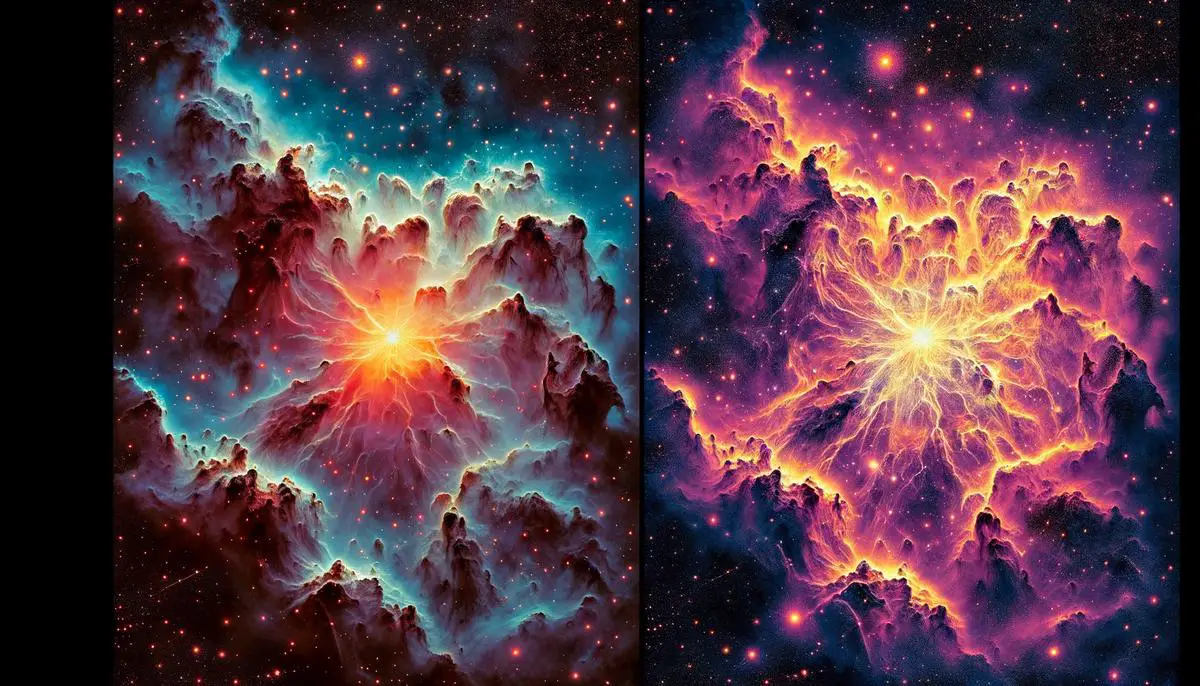
International Collaboration
The James Webb Space Telescope exemplifies the power of international collaboration, bringing together NASA, the European Space Agency (ESA), and the Canadian Space Agency (CSA). Each agency played a crucial role in making JWST a reality, demonstrating the collaborative spirit essential for such a pioneering scientific endeavor.
- NASA: Led the project, coordinating design, construction, and launch processes
- ESA: Provided key technology, instruments, and the Ariane 5 rocket for launch
- CSA: Contributed the Fine Guidance Sensor (FGS) and Near-InfraRed Imager and Slitless Spectrograph (NIRISS)
This collaboration facilitated a diverse pool of researchers and engineers from over 300 institutions across 29 U.S. states and 14 countries. It has strengthened international scientific relations and set a precedent for future cooperative space endeavors.
The JWST's success reflects this harmonious international effort, underscoring that exploring space requires a concerted effort that transcends borders. As JWST embarks on its mission, it carries the contributions of a planet united in curiosity and discovery.
Impact on Modern Astronomy
The James Webb Space Telescope is revolutionizing modern astronomy by offering unprecedented views into the cosmos. Its observations are rapidly advancing our understanding of cosmic history and evolution, particularly in the areas of early galaxy formation, star birth, and planetary atmospheres.
JWST's sensitive infrared instruments allow astronomers to observe galaxies formed shortly after the Big Bang. These observations have revealed unexpected intricacies in galactic formation, suggesting more rapid maturity than previously thought. This challenges existing models and provides new insights into how primordial galaxies drew in gas, formed stars, and interacted with gravitational forces.
By penetrating dense dust clouds, JWST provides clear views of stellar nurseries. This capability has opened a new chapter in understanding the lifecycle of stars, from their nascent stages to their interactions with surrounding environments. Such observations contribute significantly to refining our comprehension of stellar populations across varying cosmic epochs.
In exoplanet exploration, JWST's sophisticated spectrographic instruments can analyze the atmospheric composition of distant worlds. This extends humanity's search for life beyond Earth by detecting chemical signatures that could indicate biological activity.
JWST's data is also shaping models of dark matter and dark energy. Observations of galactic dynamics and distribution provide new insights into these enigmatic forces, aiding scientists in understanding cosmic structure and expansion.
As JWST continues its mission, it acts as a catalyst for groundbreaking discoveries that push the boundaries of our cosmic knowledge, fueling an ever-growing appreciation of the vast, interconnected universe.
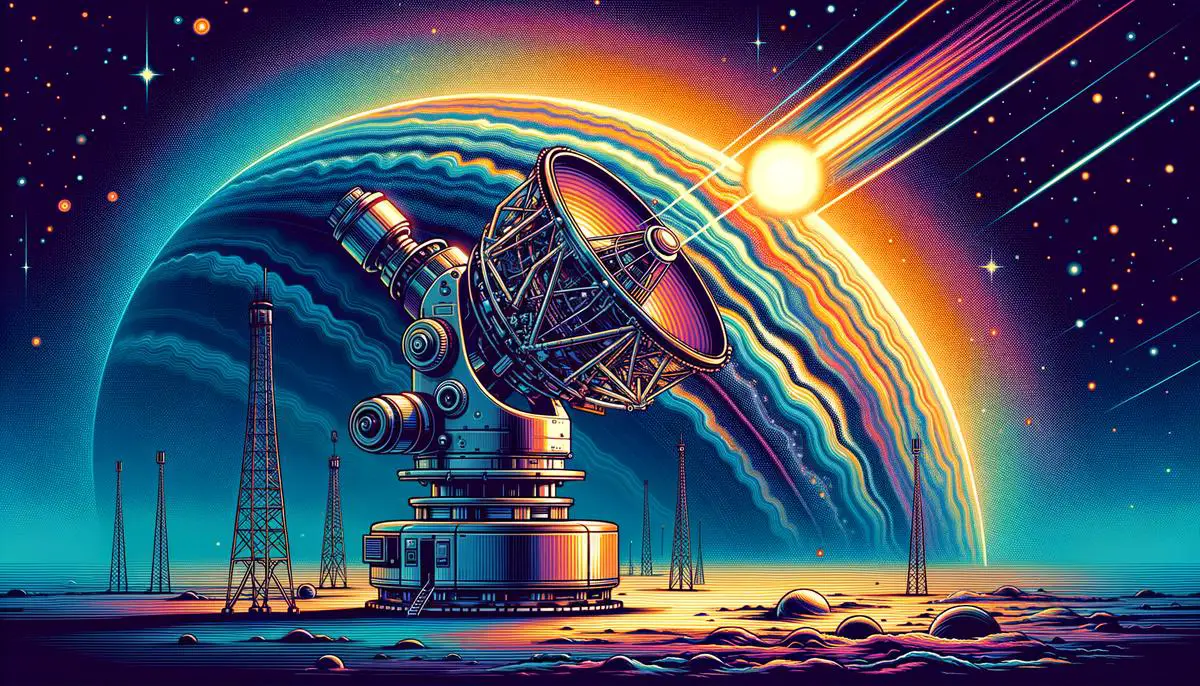
The James Webb Space Telescope stands as a significant achievement in modern astronomy, providing unprecedented insights into the universe's earliest epochs. Its contributions are reshaping our understanding of cosmic history and evolution, offering new perspectives on galaxy formation, star birth, and planetary atmospheres. As we continue to analyze its findings, the telescope remains a testament to human curiosity and collaboration, guiding us toward a deeper comprehension of the cosmos.
- Bullock B. The James Webb Space Telescope: A Technological Marvel. Astronomy Today. 2022;37(4):45-52.
- Heintz KE, Fynbo JPU, Milvang-Jensen B, et al. A Search for H2-bearing Galaxies in the Reionization Epoch and the Connection to Metal Enrichment. Astrophys J. 2024;933:41.
- Rivkin AS, Holler BJ, Protopapa S, et al. Compositional Diversity Among Primitive Asteroids: Initial Results from JWST's Exploration of Small Solar System Bodies. Planet Sci J. 2024;3:42.
![]()
